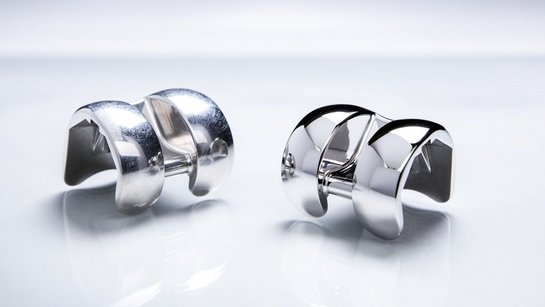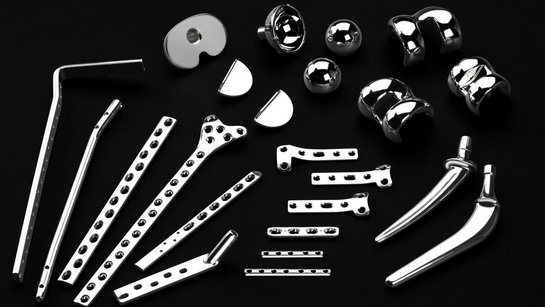
Orthopedic Implants, Part 6 – Shot Blasting Improves Longevity and produces the most sophisticated surfaces
, A.Altmann - Torna alla panoramica
Like mass finishing, shot blasting is an exceptionally versatile surface treatment technology. Its applications range from general cleaning after casting and forging to shot peening and, even, cosmetic blasting for placing a fine, matte finish on the work pieces.
Shot blasting is an impact system in which small metal or mineral pellets are thrown onto the surface of a work piece at speeds of up to 140 m/s while using turbine basting systems. This would be way to rough for the treatment of sensitive parts from the medical technology sector. Compressed air blasting systems are mainly used for these applications, which are used both as a dry blasting variant and as a wet blasting variant. The smoothest finishes achieved with shot blasting are about Ra = 16-32 microinches (= 0.4 to 0.8 μm), with wet blasting we are able to achieve finishes below Ra 0,2 µm.
The final finish highly depends on the preparation of a surface before blasting.
The most common shot blasting processes include:
- Surface cleaning to descale work pieces after forging, casting, or heat treatment. This process usually creates a rougher surface.
- Surface texturing as preparation for coating to allow for better adhesion of the coating material.
- Cosmetic blasting and texturing to place a very fine, matte, anti-glare finish on the work pieces.
- Preliminary surface smoothing of additively manufactured (3D printed) implants. While shot blasting normally makes a surface rougher, 3D printed parts have a very rough initial surface. Shot blasting provides a smoothing effect on these work pieces and is often used in preparation for mass finishing.
- Shot peening to convert tensile stresses in the surface of a workpiece into compressive stresses that make it more resistant to general wear and improve fatigue properties, especially under alternating loads.
Dry blasting:
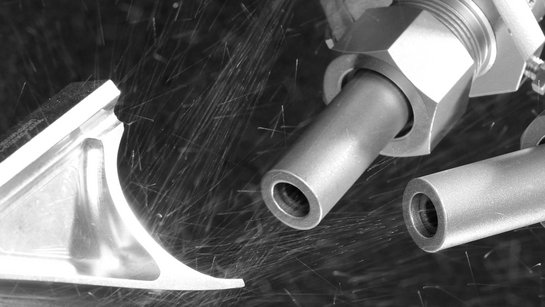
During the finishing process using the dry blasting technology, blast media is accelerated by compressed air and thrown at the work pieces through a blast nozzle, creating an extremely precise blast pattern compared to turbine blasting. Unlike turbine blasting, air blasting can be used with both metallic or mineral and organic blast media.
In the medical field, air blasting is used to finish the back of knee implants or for cosmetic blasting of medical instruments and tools.
Wet blasting:
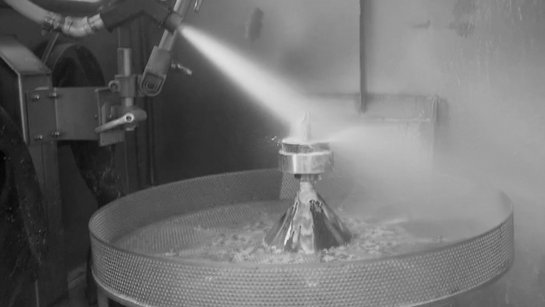
Typically wet blasting systems can be used to process orthopedic implants, too. These are used especially when particularly gentle part machining is required, as wet grinding combines strong machining requirements with a gentle surface finish.
Tibia implants, for example, which are to be given a homogeneous and silky-matt surface in some areas, are processed in wet blasting systems.
The achieved surface roughness is between Ra 0,15 -0,2 µm.
Shot Peening:
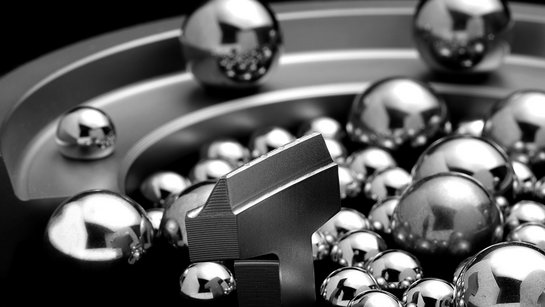
Shot peening also plays an important role in the field of orthopedic implants to increase the component life. Function-critical workpieces like titanium bone screws can be made more durable by surface hardening using shot peening which results in an increased resistance to alternating loads and an increased maximum load result. The possibility of achieving the same stability with less material is also a popular option.
Satellite Table Blast Machines (RSA)

- Used For: Finishing of hip stems, tibia plates, and other orthopedic implants
- Key Benefits: Prevention of contact between work pieces
- How It Works: These blasting systems are equipped with a turntable containing 4 to 10 rotating satellites, depending on the model. The workpieces are attached to the satellites using individual workpiece holders and then pass through the blasting chamber, which is equipped with several blasting nozzles.
Swing Table Machines (RWT, usable for Shot peening)
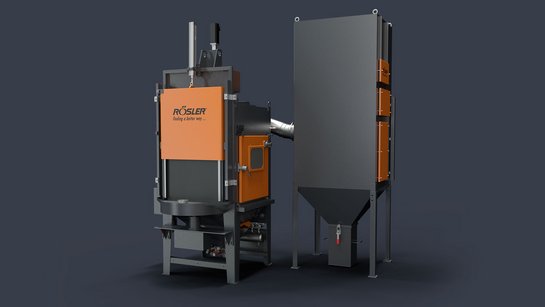
- Used For: Finishing and shot peening of orthopedic implants
- Key Benefits: Efficiency, prevention of contact between work pieces
- How It Works: The blasting systems are equipped with a turntable and, depending on the version, equipped with one or two rotating satellites per side - one or two in the blasting zone and one or two in the external loading/unloading zone. This enables workpieces to be loaded and unloaded while the other workpieces are blasted at the same time.
Robotic Blasting Systems (e.g. AST 800 R P)

- Used For: Complex part geometries and large part variety
- Key Benefits: Repeatable and precise process
- Can be used for injector, direct pressure or wet blasting
- How It Works: The robot holds the blast nozzles and follows the pre-programmed blast path to process the part according to specification.


